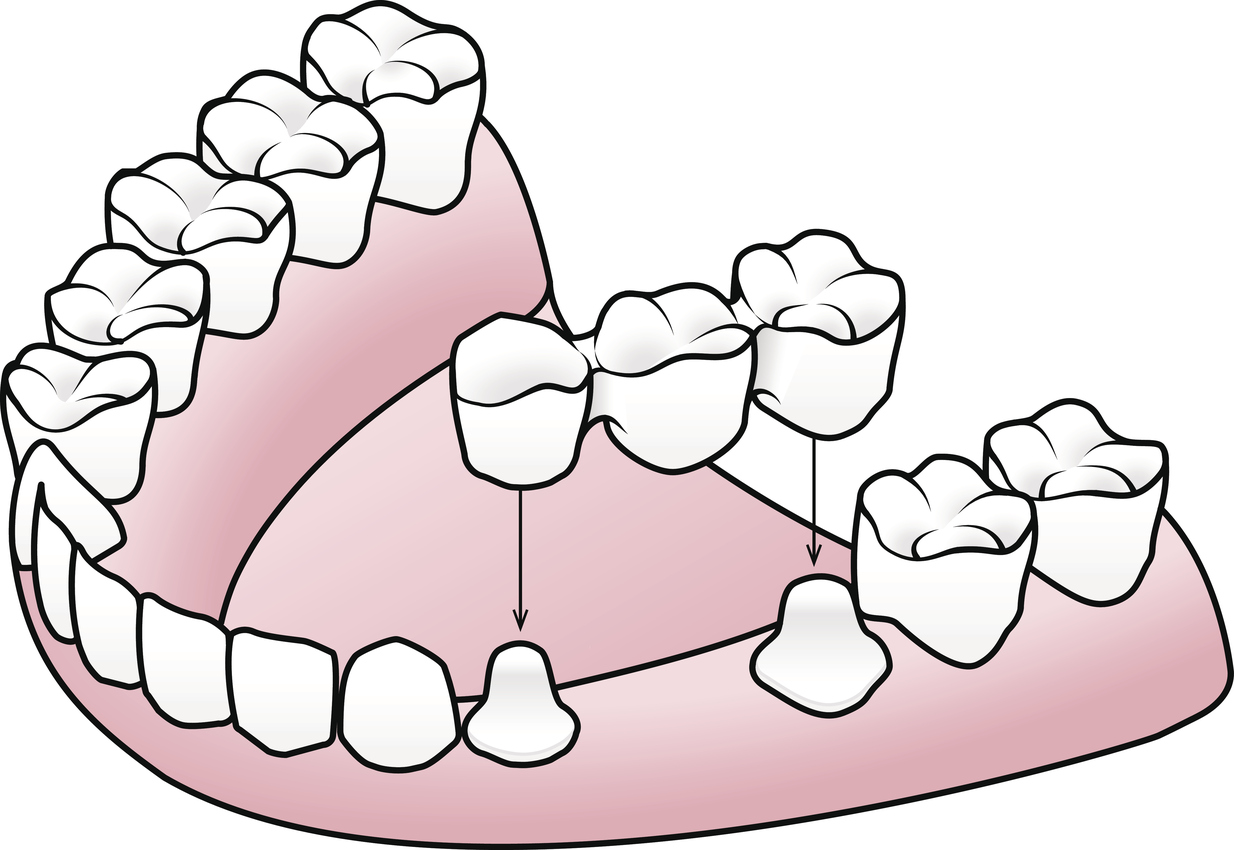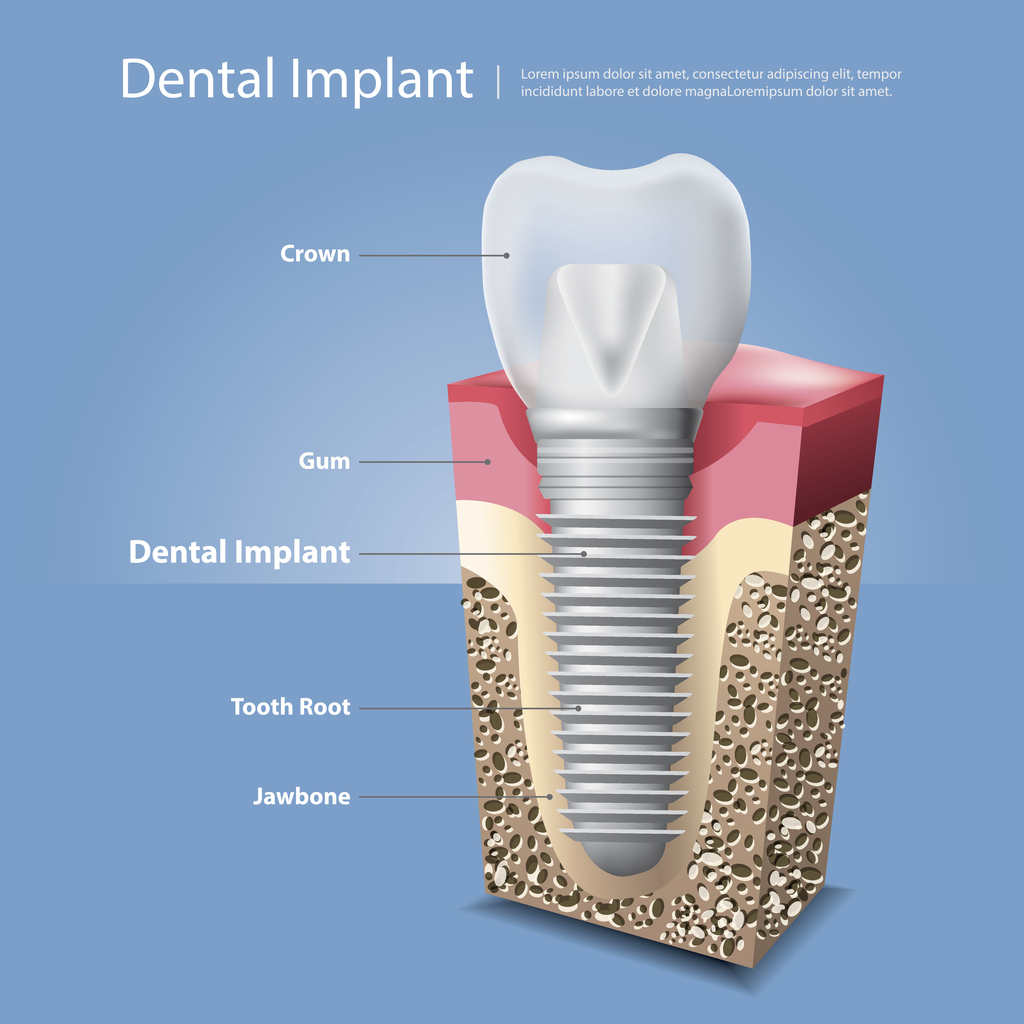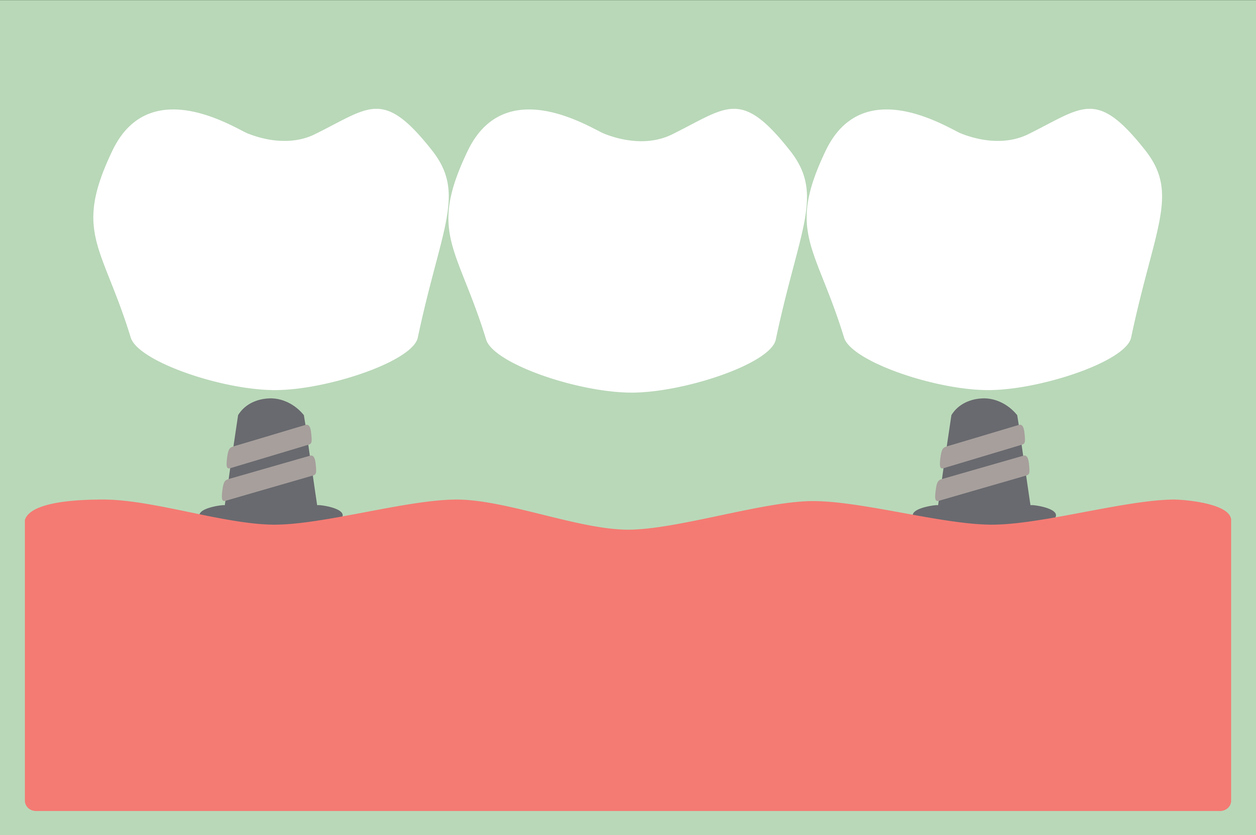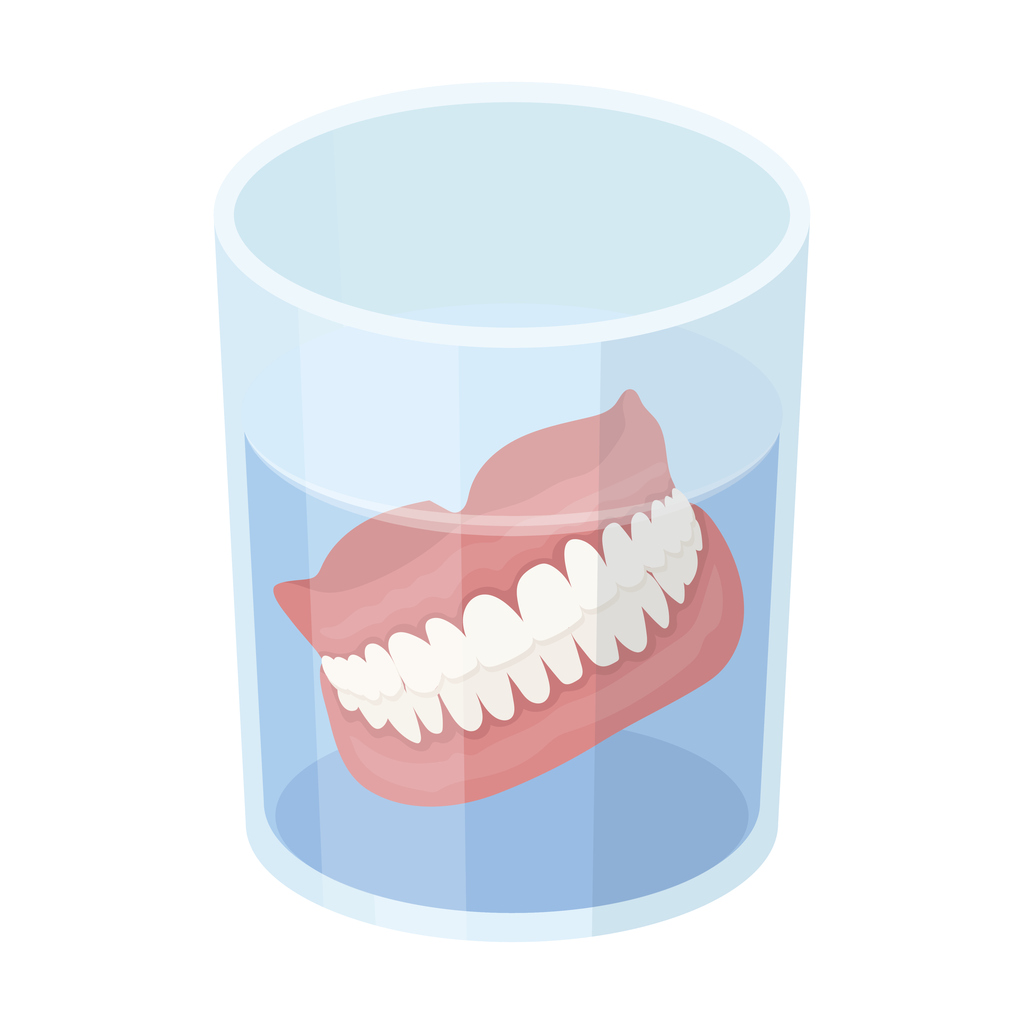Possibilities for Missing Multiple Tooth

Despite advancements in dental health, many people in the general population are still having to replace lost teeth. Keeping a full set of teeth is not as easy as it used to be because popular culture is flooded with foods that cause rapid degeneration of teeth. Habits like teeth grinding and smoking are also contributing to the loss of teeth. Arguably, smoking affects a much larger scope of the population as compared to teeth grinding.
Old age is also a key factor when it comes to the loss of teeth. The body becomes weaker as it grows older and loss of teeth is often one of the implications. Older people also face a higher risk of tooth loss in cases where they have a habit which jeopardizes their oral health.
There are choices for replacement if you have lost multiple teeth
One of the most unpleasant aspects of losing teeth is being unable to smile in public or eat normally. The aesthetic value of a good smile cannot be overstated. In most cases, people who seek restorative procedures are motivated by the need to be normal in social circles.
There are four options for people who would like to replace missing teeth. All three shall be discussed in this article, which will explain different aspects about the procedures. Patients can go for dental implants, bridge, implant supported bridge or dentures.
Contents
- Dental Implants
- Parts of a dental implant
- Types of implants
- Are implants painful?
- Healing time
- Risks and complications involved in the procedure
- Dental Bridges
- Types of dental bridges
- How do you get a dental bridge? What is the process?
- Protecting the dental bridge from damage
- Implant supported bridges
- When is an implant-supported bridge used?
- Parts of an implant-supported bridge
- The implant process
- Dentures
- Types of dentures
- Support
- Stability
- Retention
- Care for your dentures
- Keep dentures soaked in water over night
- Tooth replacement is not such a difficult thing to do
- Benefits of going for tooth replacement
Dental Implants
A dental implant can be thought of as a prosthetic tooth. The implant is a titanium pole that acts as the tooth root. It is surgically inserted into the jawbone under the gum line to allow for the mounting of replacement teeth or a bridge. The implant is permanent and won’t come loose like a denture would. A crown is placed on the implant, which is attached to the titanium post thus acting just like a natural tooth.
Different materials can be used to blend the color of the prosthetic tooth to your natural teeth. These implants has been the more popular choice of tooth replacement since they do not affect the adjacent teeth in any way, which ends up improving oral health.
Parts of a dental implant
The prosthetic tooth is made of 3 parts which complement each other to add to the stability and aesthetic value of the tooth. The three parts to a dental implant are;
• The fixture
This is the bottom part of the implant that actually gives the treatment its name. It is implanted into the bone tissue. The fixture is a cylindrical titanium rod shaped like a screw. The metal is usually coated with hydroxyapatite, which aids with the process of osseointergration (fusion).
• The abutment
A crown is typically placed on a decayed tooth, which provides a stable base. When the tooth is finally removed, the abutment is used as an anchor on which the crown can be placed. The abutment is attached to the titanium post in order to hold the crown firmly. An abutment is usually placed after the process of fusion is complete.
• The crown
The crown is the artificial tooth that is attached to the implant. To get the right size of crown for a patient, dentists take a mould of the patient’s mouth and customize the crown accordingly.

Types of implants
The American Dental Association approves two types of dental implants. These are considered to be safe for patients looking to replace missing teeth. The main difference between the two types of implants is their positioning on the jawbone.
• Endosteal implants
These are implants that are surgically inserted into the jawbone directly. There are different designs of the implant including screws, blades or cylinders. The implants are the most common when it comes to this form of treatment and can be placed to hold a single tooth or many teeth. These implants are mostly recommended for people with bridges or detachable dentures.
• Subperiosteal implants
These are implants that do not go all the way down to the bone. They are placed atop the jaw, thus a metal framework protrudes through the gum for attachment to the prosthesis. The implants are mostly used for patients with no bone structure in the jaws. The implant works best when the patient is unable to wear dentures or has minimal bone mass.
Are implants painful?
The procedure is simple and does not take a lot of time to complete. Patients who have had implants say that the process involves very little discomfort. It is deemed to be less painful than having a tooth extraction. Patients may experience some soreness after the procedure is done; however, this is usually calmed down using over-the-counter painkillers.
Healing time
Implants take some time to become part of the patient’s dental formula. The first thing that contributes to implant stability is osseointergration. The process of osseointergration basically involves development of the patient’s bone at the area of the implant. Bone growth is given time until it reaches the surface of the implant. Depending on different factors, dentists usually allow three to six months for the process of osseointergration to take place.
The process is allowed as much time as it takes and might take only two months if no complications arise during the healing period. Recent research into the procedure has shown that the healing process depends heavily on the initial attachment of the implant. Implant integration takes a much shorter time if the implant is well-placed and stable.
The number of implants and bone density also contribute to swift healing. Even though the time for healing may vary for different people, there is always a period of no-load, which reduces the risk of failure.
Risks and complications involved in the procedure
Implant therapy has a number of risks involved which the patient should be aware of before they choose to go ahead with the procedure.
Complications that could occur due to the therapy are divided into three periods. There are complications that could happen during the procedure such nerve injury. Other complications could arise during the first six months of the procedure such as failure to osseointegrate. The last type of complications are the long-term problems such as mechanical failures.
This risk should, however, not deter a patient from choosing the procedure as they are rare occurrences. For patients with healthy bone tissue, an implant usually integrates without any problems and has 93% to 98% chance of lasting for 5 years with the prosthetic tooth lasting up to 15 years.
Studies observing the long term survival of implants showed that 52% to 76% of implants last 16-20 years without any complications arising.
Dental Bridges
As the name suggests, dental bridges are placed in the mouth for the purpose of bridging a gap created by missing teeth. A dental bridge is designed to be supported by the adjacent teeth on either side of the gap. The teeth anchoring the bridge are known as abutment teeth and hold a false tooth between them. The artificial tooth is known as a pontic. False teeth are made from a variety of materials including alloys, gold, porcelain or a combination of the materials.
The dental bridge can be supported by natural teeth or implants according to the type of bridge you choose.
Types of dental bridges
There are three types of bridges:
• Traditional bridges
It is the most common type of dental bridge. A crown is made for each tooth on either side of the missing tooth and the pontic stays in the middle. The bridges are made of ceramics or porcelain fused to metal.
• Cantilever bridge
Cantilever is a bridge used when one side of the missing tooth or teeth has no adjacent teeth. The bridge is not used as much nowadays, and is not suitable to put at the back of the mouth since it puts too much pressure on the teeth and damages
them.
• Maryland bonded bridges
These are bridges that may be made of plastic teeth and gums mounted on a porcelain or metal framework, porcelain fused to metal, or purely porcelain. The bridge is also known as a Maryland bridge or a resin-bonded bridge. It is made up of porcelain or metal wings bonded to the existing teeth from one side only.
How do you get a dental bridge? What is the process?
On the first visit, your dentist will prepare the abutment teeth. This entails reshaping the teeth by removing some enamel so that a crown can be placed on them. After this, the dentist makes impressions of the teeth and hands them over to the dental lab to serve as a model for your bridge. You dentist will make a temporary bridge that you can wear to cover gaps in the mouth as you wait for your bridge to be completed.
On the second visit, the temporary bridge is removed so that the permanent bridge can be tested to find out any faults that can be fixed before the bridge is attached. The patient may be needed to make multiple visits to test the bridge to ensure the metal framework fits. During such visits, you also test your bite to make sure the bridge is comfortable. For fixed bridges, the dentist may cement the setup for a short time, say a week, to get the patient used to it. After a maximum of 2 weeks, the bridge is cemented into its position permanently.
Bridges typically last for about five to seven years if well maintained. One of the main reasons bridges fail is due to the development of new cavities on supporting teeth. Such cavities are often brought about by poor oral hygiene and can be avoided if the individual maintains a strict regime for their dental Health. With proper hygiene, bridges have a much longer lifespan.
Protecting the dental bridge from damage
Bridges cannot decay, but can incur structural damage. While the material used is usually very durable, patients can do the following to ensure they protect the bridge:
• Avoid chewing hard or sticky food with the bridge
• Wear mouth guards to prevent bruxism, a measure advised by the dentist during consultation.
• Avoid subjecting the teeth to pressure or stress by opening packages or pulling tags with the side of the mouth where the bridge is positioned.
Implant supported bridges
These are yet another option to replace multiple teeth. They are particularly advantageous to use when you have more than one tooth missing. The bridges are supported by implants from either side such that each missing tooth has an implant to support the bridge. With this type of support, the bridge does not interfere with other teeth around the missing tooth. There are no frameworks to be used. A bridge of this kind may also include a pontic where the teeth on either end support the suspended tooth. This is usually done, when placing an implant for every missing tooth is not available. Since such bridges are supported by the firm base of the implant, they feel very natural and comfortable.

When is an implant-supported bridge used?
The main situation in which such bridges are applied is when individual implants put too much pressure on the prosthetic teeth. When a patient cannot sustain the pressure of having individual implants, a bridge is used to distribute the pressure between a few teeth.
The surrounding teeth and gums should be healthy for an implant-supported bridge to be placed. Patients who don’t have enough bone mass to support the implants will receive bone augmentation or grafting so that the procedure can be done.
Parts of an implant-supported bridge
The bridge includes implants and the restoration. As for the implants, they are inserted into the jaw just like normal implants and the restoration-made up of the false teeth for the bridge-is placed on top of the implants.
The implant process
Each case may vary slightly when it comes to the amount of time it takes to finalize the implant process. It usually takes five months when placing implants for the lower jaw, and seven months if the implants are going to the upper jaw. The process could easily extend to a year, however; especially when the patient needs bone build up before the procedure.
The process takes two surgeries; one for placing implants in their positions and another to expose implants for the placing of the bridge. The period between these two surgeries is usually six months to allow for healing. The timelines will vary slightly but are generally consistent.
Implant-supported bridges are better than other types
These bridges have become more popular than other types of bridges since they have minimum interference with other teeth and a long lifespan. The bridge protects adjacent teeth and minimizes dental work on other teeth.
Dentures
These are replacements that are different to other options for people who have lost multiple teeth. They do not attach to the jaw. Dentures can be taken out and put back in the mouth whenever appropriate. People who get dentures usually need some time to get used to them even though the dentures never really feel like real teeth. However, there have been a lot of developments in the dental world and today dentures look like real teeth by all means.
Types of dentures
There are two main types of dentures, namely complete and partial dentures. Full dentures are applicable for people who have lost all their teeth due to an unfortunate event or old age. Partial dentures are used when the patient has some teeth and is looking to fill gaps.
Prosthodontic principles that dentures must adhere to

This is focused mainly on how the denture is kept from moving towards the arch by oral tissue such as gums. This is particularly an issue when chewing as the denture may move deeper into the arch. The mandibular arch gets support from the buccal shelf, which extends from the posterior and the pear-shaped pad. The alveolar ridge crest also provides secondary support.
Stability
When it comes to dentures, stability is described by the extent by which they move front to back or side to side when worn. Good dentures with adequate stability usually have a smoother denture base- the pink part below false teeth-and continuous contact with the edentulous ridge. The size of this ridge also determines how comfortable the dentures will be such that a higher ridge is more favorable. The edentulous ridge is the raised area of the mouth where the teeth used to be held.
Retention
This refers to the extent to which the denture moves vertically in an opposite direction to insertion. A denture with good retention should fit the patient’s mouth well, taking the shape of the interior of the mouth. The denture design should complement the underlying mucosa to improve retention. This promotes surface tension, friction and suction, which all contribute in keeping the denture in close contact with the edentulous ridge.
Prosthodontists have a scale for measuring denture stability known as the Kapur index.
Technology using implants can improve denture retention by a great deal. The experience of wearing dentures becomes better and the bone is protected from wearing away. Rather than place implants to serve only as blocking mechanism, they could be used to form a modified base for dentures, thus making them more efficient when it comes to retention. Some options that are currently available include precision balls attachments or a metal “harder bar.”
Care for your dentures
Dentures do not mean that the individual is free from dental visits, on the contrary, such a person would need to visit the dentist to keep up with any changes in their dental health such as bone wasting.
Dentures should be cleaned daily in order to keep them in good condition. Plaque and tartar buildup can occur on dentures just as it occurs on real teeth. Dentures can be cleaned using mechanical or chemical denture cleaners. To keep the dentures clean, you should not wear them on a constant basis. Removing dentures during sleep allows tissues a chance to recover. Sleeping with dentures is usually thought of as sleeping with ones’ shoes on. This can also cause the development of a fungal infection such as denture-related stomatitis which is very common with people who do not take adequate care of their dentures.
Keep dentures soaked in water over night
Dentures are kept in water at night to improve their cleanliness. Using denture cleaning options from the convenience store, you can soak the dentures to kill germs. The practice has been found to be very effective in increasing the lifespan of dentures and keeping them in hygienic condition.
Tooth replacement is not such a difficult thing to do
There are many options which work fine for different people.
You need to see your dentist so that they can advise you on a restorative measure that suits your situation. This assessment is usually based on what you find convenient as well as what your dental health allows.
<h3id=”replacement” class=”faq”>Benefits of going for tooth replacement
There are many benefits to it, which patients notice immediately they have their replacement set of teeth. A few benefits include;
• Protecting healthy teeth from decaying
• Protects underlying bone from wasting away
• Restores you normal smile
• Allows for better communication as the person can speak clearly
• Gives shape to your face since keeping the face from distorting
Patients should be careful to go to the right kind of practitioner for any help they may need. It is always good to find out what kind of certification your dentist has attained.



